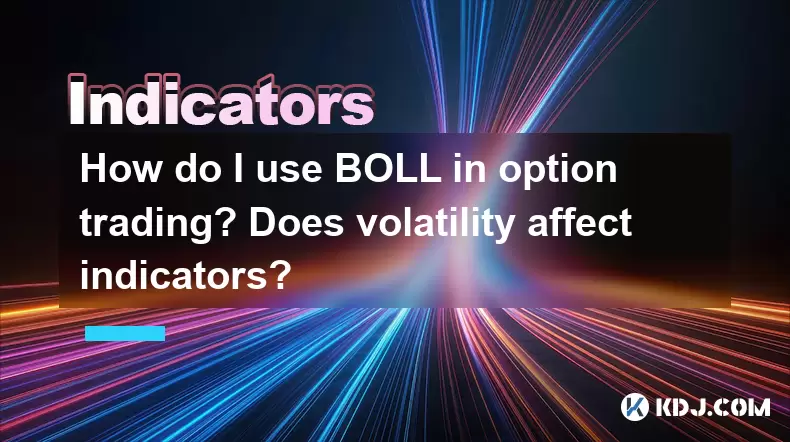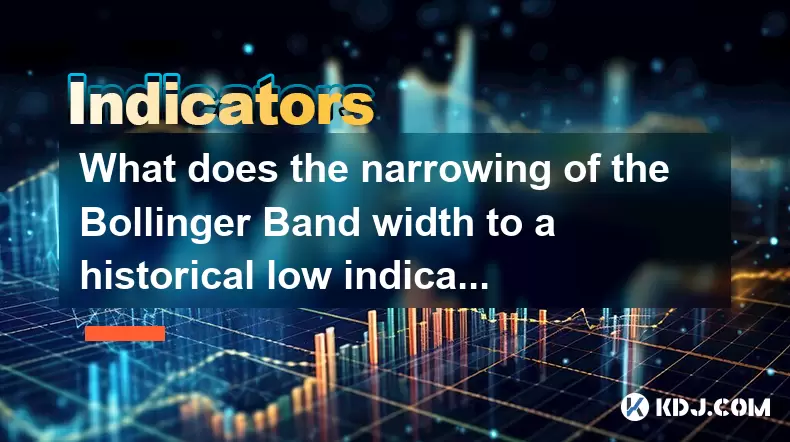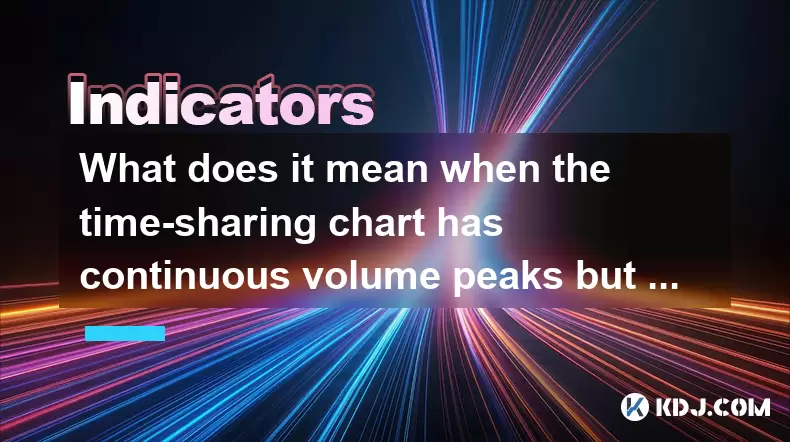-
 Bitcoin
Bitcoin $102,936.6333
3.84% -
 Ethereum
Ethereum $2,303.2860
5.42% -
 Tether USDt
Tether USDt $1.0008
0.05% -
 XRP
XRP $2.0592
5.18% -
 BNB
BNB $630.3035
4.07% -
 Solana
Solana $139.0485
7.91% -
 USDC
USDC $1.0000
0.01% -
 TRON
TRON $0.2722
3.17% -
 Dogecoin
Dogecoin $0.1572
6.30% -
 Cardano
Cardano $0.5543
5.37% -
 Hyperliquid
Hyperliquid $37.0789
8.94% -
 Bitcoin Cash
Bitcoin Cash $454.8827
2.38% -
 Sui
Sui $2.6088
10.94% -
 UNUS SED LEO
UNUS SED LEO $9.0751
0.81% -
 Chainlink
Chainlink $12.1078
6.95% -
 Stellar
Stellar $0.2351
5.76% -
 Avalanche
Avalanche $17.1771
7.35% -
 Toncoin
Toncoin $2.8438
5.50% -
 Shiba Inu
Shiba Inu $0.0...01112
7.74% -
 Litecoin
Litecoin $82.9385
5.91% -
 Hedera
Hedera $0.1409
8.82% -
 Ethena USDe
Ethena USDe $1.0006
0.01% -
 Monero
Monero $301.2470
1.77% -
 Dai
Dai $1.0001
0.01% -
 Polkadot
Polkadot $3.2751
3.88% -
 Bitget Token
Bitget Token $4.0623
2.00% -
 Uniswap
Uniswap $6.5652
8.27% -
 Pepe
Pepe $0.0...09287
7.77% -
 Pi
Pi $0.5146
6.32% -
 Aave
Aave $242.0173
11.35%
How do I use BOLL in option trading? Does volatility affect indicators?
Use Bollinger Bands in option trading to identify trends, overbought/oversold conditions, and breakouts; adjust settings for different market volatilities and combine with other indicators for better signals.
May 25, 2025 at 06:00 am

How to Use BOLL in Option Trading? Does Volatility Affect Indicators?
Option trading is a complex yet potentially rewarding aspect of the cryptocurrency market. One of the technical indicators that traders often use to make informed decisions is the Bollinger Bands (BOLL). In this article, we will delve into how to effectively use BOLL in option trading and explore whether volatility impacts these indicators.
Understanding Bollinger Bands (BOLL)
Bollinger Bands are a type of statistical chart characterizing the prices and volatility over time of a financial instrument or commodity, including cryptocurrencies. Developed by John Bollinger, these bands consist of a moving average and two standard deviation lines plotted above and below it. The standard settings are a 20-day simple moving average (SMA) and two standard deviations.
The upper band represents the overbought level, while the lower band signifies the oversold level. When the price moves closer to the upper band, it suggests that the asset might be overbought, and when it approaches the lower band, it might be oversold. The space between the bands widens during periods of high volatility and contracts during low volatility.
Applying BOLL in Option Trading
To use Bollinger Bands effectively in option trading, you need to follow a systematic approach. Here's how you can integrate BOLL into your trading strategy:
Identify the Trend: First, look at the direction of the moving average. If the price is above the moving average, it indicates an uptrend, and if below, a downtrend. This helps you determine the general market direction.
Spot Overbought and Oversold Conditions: When the price touches or crosses the upper Bollinger Band, it could be a signal to sell or buy put options. Conversely, when the price hits the lower band, it might be an opportune time to buy or sell call options.
Look for Breakouts: A breakout occurs when the price moves outside the Bollinger Bands. A breakout above the upper band might signal a strong bullish trend, prompting you to buy call options. A breakout below the lower band could indicate a bearish trend, suggesting the purchase of put options.
Watch for Squeezes: A Bollinger Band Squeeze happens when the bands come closer together, indicating low volatility. This often precedes a significant price move. Traders might prepare to buy options in anticipation of increased volatility.
Combine with Other Indicators: While BOLL can be a powerful tool, combining it with other indicators like the Relative Strength Index (RSI) or Moving Average Convergence Divergence (MACD) can enhance your trading strategy.
Impact of Volatility on Bollinger Bands
Volatility is a crucial factor in option trading and directly affects the Bollinger Bands. Since the bands are based on standard deviations, their width expands and contracts with changes in volatility. Here's how volatility impacts the bands:
Increased Volatility: When the market experiences high volatility, the Bollinger Bands widen. This means the price can move further away from the moving average without necessarily indicating overbought or oversold conditions. Traders should be cautious as wider bands suggest larger price swings, which can lead to significant profits or losses in option trading.
Decreased Volatility: During periods of low volatility, the bands narrow. This contraction often signals a potential breakout. Traders might use this as an opportunity to prepare for a significant move in the market, adjusting their option strategies accordingly.
False Signals: High volatility can sometimes lead to false signals, as the bands may be too wide, causing the price to frequently touch or cross the bands without a corresponding trend change. Traders need to be aware of this and possibly use additional indicators to confirm signals.
Practical Example of Using BOLL in Option Trading
Let's walk through a practical example of how to use Bollinger Bands in option trading within the cryptocurrency market.
Scenario: You are trading options on Bitcoin (BTC). You notice that the price of BTC has been moving within a narrow range, and the Bollinger Bands have started to contract, indicating a potential squeeze.
Step-by-Step Process:
- Monitor the Bands: Keep an eye on the Bollinger Bands. Notice when they start to contract significantly, signaling low volatility.
- Prepare for a Breakout: As the bands begin to narrow, consider purchasing options that could benefit from a breakout. For instance, you might buy both call and put options to hedge your position.
- Wait for the Breakout: Once the price breaks out of the bands, assess the direction. If it breaks above the upper band, it's likely a bullish signal, and you might exercise or sell your call options. If it breaks below the lower band, it's a bearish signal, and you could do the same with your put options.
- Adjust Your Strategy: Depending on the strength and direction of the breakout, adjust your option positions accordingly. If the breakout is strong and continues, you might hold your options longer. If it appears to be a false signal, consider closing your positions to minimize losses.
Combining BOLL with Other Indicators
To enhance the effectiveness of Bollinger Bands in option trading, combining them with other technical indicators can provide more robust signals. Here's how you can integrate BOLL with other tools:
Relative Strength Index (RSI): The RSI can help confirm overbought or oversold conditions indicated by the Bollinger Bands. If the price touches the upper band and the RSI is above 70, it's a strong overbought signal. Conversely, if the price hits the lower band and the RSI is below 30, it's a strong oversold signal.
Moving Average Convergence Divergence (MACD): The MACD can help identify the momentum of a trend. If the price breaks out above the upper Bollinger Band and the MACD line crosses above the signal line, it's a bullish confirmation. If the price breaks below the lower band and the MACD line crosses below the signal line, it's a bearish confirmation.
Volume Indicators: High trading volume can confirm breakouts. If the price breaks out of the Bollinger Bands with high volume, it's more likely to be a genuine move rather than a false signal.
Adjusting BOLL Settings for Different Market Conditions
While the default settings for Bollinger Bands are a 20-day SMA and two standard deviations, you can adjust these parameters to better suit different market conditions or trading strategies:
Short-Term Trading: For short-term trading, you might use a shorter period for the moving average, such as a 10-day SMA. This can make the bands more responsive to recent price movements, which is useful for intraday trading.
Long-Term Trading: For long-term trading, you might extend the moving average period to 50 or even 100 days. This can help filter out short-term fluctuations and focus on broader trends, which is beneficial for holding options over longer periods.
Volatility Adjustments: In highly volatile markets, you might consider using a higher number of standard deviations, such as 2.5 or 3, to account for larger price swings. In less volatile markets, you might use a lower number, such as 1.5, to make the bands more sensitive to price movements.
Frequently Asked Questions
Q1: Can Bollinger Bands be used alone in option trading?
A1: While Bollinger Bands can provide valuable insights into market volatility and potential price movements, using them alone might not be sufficient for a comprehensive trading strategy. Combining BOLL with other indicators like RSI, MACD, and volume can help confirm signals and improve the accuracy of your trades.
Q2: How often should I adjust the settings of Bollinger Bands in option trading?
A2: The frequency of adjusting Bollinger Bands settings depends on your trading style and the market conditions. For short-term traders, adjustments might be more frequent, possibly daily or weekly, to respond to rapid changes in market volatility. Long-term traders might adjust settings less often, perhaps monthly or quarterly, to align with broader market trends.
Q3: Are there specific cryptocurrencies that work better with Bollinger Bands in option trading?
A3: Bollinger Bands can be applied to any cryptocurrency, but they tend to work well with assets that have sufficient liquidity and price data. Popular cryptocurrencies like Bitcoin (BTC) and Ethereum (ETH) often have more reliable and extensive data, making them suitable for using BOLL in option trading. However, the effectiveness of BOLL can vary based on the specific volatility and trading patterns of each cryptocurrency.
Q4: How can I avoid false signals when using Bollinger Bands in option trading?
A4: To minimize false signals, consider the following strategies:
- Use Additional Indicators: Confirm BOLL signals with other indicators like RSI or MACD.
- Watch Volume: High volume can validate breakouts, reducing the likelihood of false signals.
- Consider Market Context: Be aware of overall market trends and news events that might influence price movements.
- Adjust Sensitivity: Fine-tune the settings of your Bollinger Bands to better match current market volatility.
Disclaimer:info@kdj.com
The information provided is not trading advice. kdj.com does not assume any responsibility for any investments made based on the information provided in this article. Cryptocurrencies are highly volatile and it is highly recommended that you invest with caution after thorough research!
If you believe that the content used on this website infringes your copyright, please contact us immediately (info@kdj.com) and we will delete it promptly.
- Bitcoin Scaling Showdown: Lightning Network, Sztorc, and the Future of Payments
- 2025-06-24 04:25:12
- Cathie Wood, ARK Invest, and Circle Shares: A Wild Ride on the Stablecoin Wave
- 2025-06-24 04:25:12
- Crypto Penny Coins: Hunting for Monster Gains in 2025
- 2025-06-24 02:45:12
- Ethereum Whale Dips Into Crashing ETH: Smart Move?
- 2025-06-24 02:25:12
- Shiba Inu vs. Rival Tokens: Navigating the Cryptocurrency Craze in NYC
- 2025-06-24 03:10:22
- Stablecoin Scramble: Market Structure and Bill Passage in the Crypto Wild West
- 2025-06-24 02:45:12
Related knowledge

How to interpret that the time-sharing chart shows "volume and price rise together" but the MACD red column shortens?
Jun 24,2025 at 01:08am
Understanding the Concept of 'Volume and Price Rise Together'In cryptocurrency trading, when a time-sharing chart shows that both volume and price rise together, it is typically interpreted as a sign of strong buying pressure. This means more traders are entering long positions, pushing the price higher while increasing the trading volume. This phenomen...

Is it contradictory that the moving average system is arranged in a bullish pattern but the DMI shows a decline in trend strength?
Jun 23,2025 at 11:43pm
Understanding the Moving Average and DMI RelationshipIn cryptocurrency trading, technical analysis plays a crucial role in identifying potential trends and making informed decisions. Two of the most commonly used indicators are the Moving Average (MA) and the Directional Movement Index (DMI). While both tools aim to provide insight into market direction...

How to interpret that the Williams indicator quickly turns back in the overbought area but does not fall below the 50-axis?
Jun 24,2025 at 02:01am
Understanding the Williams %R Indicator in Cryptocurrency TradingThe Williams %R indicator, often referred to as Williams Percent Range, is a momentum oscillator used by traders to identify overbought or oversold conditions in financial markets, including cryptocurrency. It ranges from 0 to -100, where values above -20 are considered overbought and thos...

What is the significance of the gap formed by the gap opening not being filled within five days?
Jun 23,2025 at 09:42pm
Understanding Gaps in Cryptocurrency TradingIn the world of cryptocurrency trading, a gap refers to a situation where the price of an asset jumps from one level to another without any trading activity occurring between those two levels. This often happens over weekends or holidays when the market is closed, and significant news or events occur that impa...

What does the narrowing of the Bollinger Band width to a historical low indicate?
Jun 24,2025 at 02:35am
Understanding Bollinger Bands and Their Role in Technical AnalysisBollinger Bands, developed by John Bollinger in the 1980s, are a popular technical analysis tool used to measure market volatility. They consist of three lines: a simple moving average (SMA) in the center, typically over a 20-period setting, and two outer bands that are set at a standard ...

What does it mean when the time-sharing chart has continuous volume peaks but the price fluctuation is not large?
Jun 24,2025 at 03:49am
Understanding the Time-Sharing Chart in Cryptocurrency TradingIn cryptocurrency trading, time-sharing charts are crucial tools that help traders monitor real-time price movements and volume activity. These charts display data within specific time intervals—such as 1-minute, 5-minute, or 15-minute windows—and allow for granular analysis of market behavio...

How to interpret that the time-sharing chart shows "volume and price rise together" but the MACD red column shortens?
Jun 24,2025 at 01:08am
Understanding the Concept of 'Volume and Price Rise Together'In cryptocurrency trading, when a time-sharing chart shows that both volume and price rise together, it is typically interpreted as a sign of strong buying pressure. This means more traders are entering long positions, pushing the price higher while increasing the trading volume. This phenomen...

Is it contradictory that the moving average system is arranged in a bullish pattern but the DMI shows a decline in trend strength?
Jun 23,2025 at 11:43pm
Understanding the Moving Average and DMI RelationshipIn cryptocurrency trading, technical analysis plays a crucial role in identifying potential trends and making informed decisions. Two of the most commonly used indicators are the Moving Average (MA) and the Directional Movement Index (DMI). While both tools aim to provide insight into market direction...

How to interpret that the Williams indicator quickly turns back in the overbought area but does not fall below the 50-axis?
Jun 24,2025 at 02:01am
Understanding the Williams %R Indicator in Cryptocurrency TradingThe Williams %R indicator, often referred to as Williams Percent Range, is a momentum oscillator used by traders to identify overbought or oversold conditions in financial markets, including cryptocurrency. It ranges from 0 to -100, where values above -20 are considered overbought and thos...

What is the significance of the gap formed by the gap opening not being filled within five days?
Jun 23,2025 at 09:42pm
Understanding Gaps in Cryptocurrency TradingIn the world of cryptocurrency trading, a gap refers to a situation where the price of an asset jumps from one level to another without any trading activity occurring between those two levels. This often happens over weekends or holidays when the market is closed, and significant news or events occur that impa...

What does the narrowing of the Bollinger Band width to a historical low indicate?
Jun 24,2025 at 02:35am
Understanding Bollinger Bands and Their Role in Technical AnalysisBollinger Bands, developed by John Bollinger in the 1980s, are a popular technical analysis tool used to measure market volatility. They consist of three lines: a simple moving average (SMA) in the center, typically over a 20-period setting, and two outer bands that are set at a standard ...

What does it mean when the time-sharing chart has continuous volume peaks but the price fluctuation is not large?
Jun 24,2025 at 03:49am
Understanding the Time-Sharing Chart in Cryptocurrency TradingIn cryptocurrency trading, time-sharing charts are crucial tools that help traders monitor real-time price movements and volume activity. These charts display data within specific time intervals—such as 1-minute, 5-minute, or 15-minute windows—and allow for granular analysis of market behavio...
See all articles
























































































